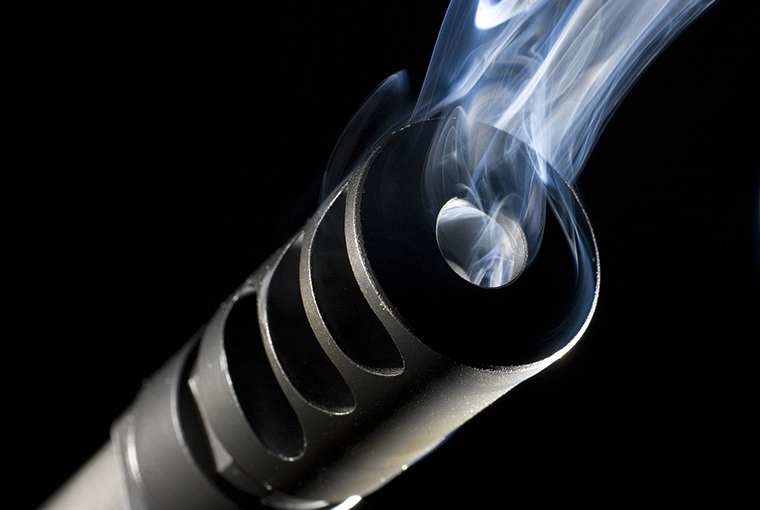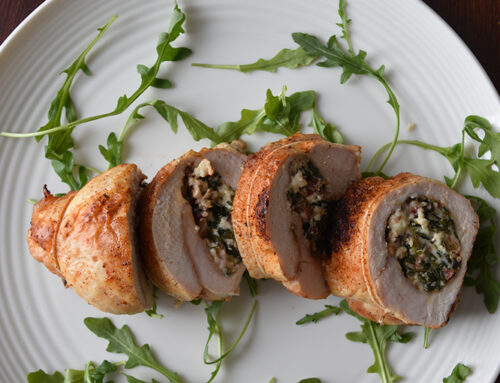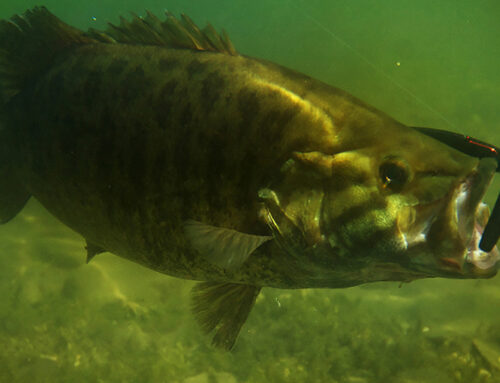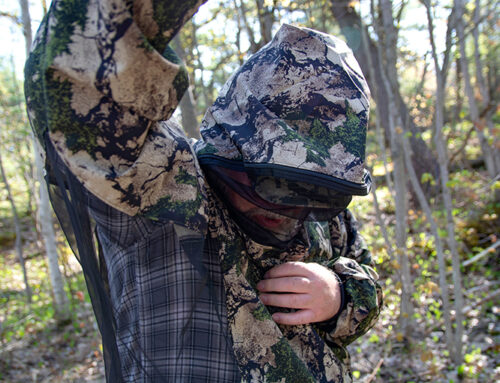
One of the best ways to tame recoil on any calibre is to install a muzzle brake. It’s a simple device that actually works well, reducing felt recoil and making it possible to practise with your hunting rifle without developing a flinch.
Big guns, from the .338 Lapua to .50 calibres, always come with muzzle brakes. That’s because they’re known to have a lot of recoil and they would be very difficult and uncomfortable to shoot without a brake.
Muzzle brakes work by channelling the airflow of the muzzle blast (propellant gases) through a series of vents or baffles, redirecting the force to counter recoil and muzzle flip. Brakes were originally introduced for artillery and the main gun on a battle tank.
On all guns, the brake helps to reduce muzzle flip (or jump), which helps keep the sights on the target. This is especially important for hunting.
When we were on safari in Africa last year, we used rifles in 7mm Winchester Short Magnum with muzzle brakes. When Linda shot her zebra at 225 metres, the rifle moved so little that she could see the bullet hit the target, and watched through her sight as the animal ran a short distance and fell. Even if this were the only benefit of a muzzle brake, we’d have one on every hunting rifle we own.
Most hunting rifles are light and handy in the bush. So the shooter feels every little bit of recoil that the .30-06 or .300 Winchester Magnum can deliver. If you shoot more than one shot in a row, you’re likely going to develop a flinch. A flinch is the reaction your body has to being whacked — it’s a smart reaction from a body’s point of view, but it interferes with accurate shooting.
There are several ways to reduce felt recoil, such as using a heavier gun with a heavier barrel, putting mercury recoil reducers in the stock, using a stock design that’s straight in line with the force of the muzzle blast, or even using low-recoil hunting loads. But the single most effective method to reduce felt recoil is to use a muzzle brake.
And the noise?
The gas expelled during firing is the source of the sound made by a shot. So, without getting into the physics of shockwaves, there should be no more and no less noise with a brake, because the amount of gas is determined by the gun, not the brake. However, as the gases are redirected, so is the noise. We have taken informal decibel readings of a shot being fired at the muzzle, at the firer, and midway alongside and we’ve found that all shooting is loud — so loud that wearing hearing protection is essential. We found that there was no significant difference in noise level between a rifle shot with a brake and one without — ear defenders are required in both cases. In fact, we wear our electronic earmuffs while hunting. We can hear the sounds of nature better and we can take a shot with complete comfort. On safari, the electronic earmuffs were also very useful for hearing our professional hunter whisper instructions to us as we stalked game.
No matter the device, the crack of the bullet is separate, and different, from the sound of the muzzle blast. The crack isn’t affected by a muzzle brake, as it’s caused by the bullet breaking the sound barrier while it is supersonic. It’s another good reason to always wear your ear protection while firing a rifle.

One size fits all
The final important benefit of a muzzle brake is that a smaller person can comfortably shoot a bigger calibre than they might otherwise. This is important for youngsters, certainly, and for women, who are joining the hunt in large numbers. It’s also important for anyone who is recoil sensitive — maybe due to vertebrae damage, or propensity for headaches, or a history of concussion.
Controlling recoil through the use of a muzzle brake is also key for anyone who wants to shoot well and shoot often. And those of you who shoot well know you got there by shooting often.
Originally published in the June 2015 edition of Ontario OUT of DOORS






My 6.5×55 used to make me flinch so much that I couldn’t hit a target to save my life. After putting the muzzle break on it, now it shoots like my .22 Yes it is loud, but there is 0 recoil so it was worth every penny.
If you are shooting with a muzzle brake, you are shooting too much gun. The statement that they are not noisier, well have you ever sat in the next lane?
If your barrel isn’t threaded, can a Firearm gunsmith do it or where must I go?
I shoot a Howa Hogue in 30-06 calibre. Threaded barrel. Looking for a screw on muzzle break.
In BC Canada..or available in Canada for this rifle any info would be helpful companies ones you have tested and recommend. Where to buy in Canada
Mainly mule deer/whitetail and spring Blackbear
Appreciate any and all info
Thank-you. Ian
Ian,
Keith responds as follows:
The Howa Hogue is a very fine rifle but the 30-06 caliber is certainly known for its flinch causing recoil. A muzzle brake would help you fire better shots with it.
You would need to know the outside diameter and the pitch of the threaded portion to obtain the correct screw on muzzle brake and then, they usually need to be indexed in order for them to function properly. Since the Howa factory threaded the end of the barrel a certain way, they likely had a specific muzzle brake in mind. I’d suggest you contact where you purchased the rifle and ask them for the intended muzzle brake or contact Howa directly. You might also think about contacting your local gunsmith who may have muzzle brakes in stock and can ensure it gets install correctly.
Our in-house gun guy also says:
I would highly recommend that they get a gunsmith to install the muzzle brake. Even screw-on brakes aren’t really for DIYers unless you really know what you’re doing. I had a threaded barrel on my R700 AAC-SD rifle and had Ellwood Epps install a Tridelta AR15 muzzle brake (three wide triangular ports on each side plus more ports on top I was really happy with). It worked well to reduce recoil without looking ridiculous. $50 online plus another maybe $30 to have it installed.
I know this is old but there is some dangerous information in it. The sound impulse from a shot is very fast. To capture the peak sound you need a device that has the ability to capture very short impulses or you will end up missing how high the sound actually is. The noise level to the shooter when using a muzzle break is significantly higher than with out. Check out a bit better study below:
https://precisionrifleblog.com/2015/08/07/muzzle-brakes-sound-test/
If you are using one at the range double up your ear protection with a good set of muffs and plugs underneath. For most brakes this should be enough to prevent hearing damage.
Hi, there. Thanks for the note. Here’s a response from Guns & Ammo columnist Keith Cunningham and Linda Miller.
“There are a couple of points that need to be put in perspective here.
Firstly, it doesn’t matter if you are shooting with or without a muzzle brake, if you fire a gun without hearing protection, you WILL damage your hearing. I developed tinnitus while fighting in Vietnam because we didn’t wear any hearing protection during the fire fights. In the Canadian Army, I further aggravated my hearing loss by using poorly fitted ear defenders. I was a member of the unit rifle team for over 25 years and heard millions of rounds being fired. It was only in the last part of this experience that those making ear defenders finally came up with something that really works. So, for the past 30 years I have been shooting, and been around a lot of shooters shooting with muzzle brakes and have not suffered any more hearing loss. I have my hearing checked routinely and it has remained the same for many years.
The wearing of ear plugs alone is not good enough. One can still suffer hearing damage through the bone behind the ear, therefore, hearing defenders are a must. Certainly if one is more comfortable wearing plugs and the defenders, this is fine provided the shooter can still hear the range commands. We recommend the electronic ear defenders so that the shooter can hear range commands but the loud sounds are stopped. On our range complex the use of electronic ear defenders are a must.
The second point is how the test in the article was actually conducted. They compare the sound level with a rifle that doesn’t have a brake to one that does, measuring the sound levels off to one side and behind the shooter. In all cases, their chart shows the sound level at these two locations to be higher with a brake than without. To begin with, we think that brakes do not produce more sound, there is the same amount of powder being burnt with or without a brake – but with a brake, it’s the same amount of sound being redirected so you actually hear more of it. But their charts show more sound behind the rifle and to the side as compared to no brake.
Here’s what we think is happening here. Without a brake most of the sound is propelled down range, so we actually hear less off to the side or to the rear. If you wanted to compare with and without a brake, you first would need to measure the sound without a brake from a point in front of the muzzle where the sound would be loudest. Then compare that noise with what you hear off to the side and to the rear. For example, in their first chart they show the sound levels from the side and show the rifle without a brake with 162.7 dB. Then, with a brake, their measurements off to the side range from 164.8 – 166.7 dB. I suspect if their base line sound level was taken from in front (where most of the noise is without a brake) it would be higher than the brake readings and we would not have the illusion of the brake creating more noise. It is louder with a brake measured to the side and behind the shooter, but the brake doesn’t make more sound, it just redirects what’s there is in the first place. But we don’t know what’s there is in the first place unless we measure in front of the muzzle without a brake.
Putting the microphone off to the side and over the shooter misses an important point. The shooter, located where he is in reference to the rifle and the sound, is actually in the “eye of the storm”. Putting the mic 1.6m above the shooter does not give a true representation of what the shooter is experiencing.
The muzzle brake reduces felt recoil. Overcoming recoil is one of the hardest parts of firing a good shot. In the marksmanship principles, the very last point is ”recoil management”. If you don’t manage the recoil the same for each shot, then the shot will go someplace different each time. The lighter the rifle, the bigger the cartridge, the more recoil – and the more recoil there is, the more recoil management is required. People can shoot better with a muzzle brake than without. We have hundreds of people here every year who shoot with a muzzle brake and would refuse to shoot without one.
Linda and I, as do lots of others, have ear defenders handy when we are hunting. We sometimes wear them on cold days to keep our ears warm. They magnify low level noises and help old ears hear more sounds in the bush and if you have to fire a shot, then they stop the loud noise.
The best of both worlds (less recoil and less sound) is with the use of a suppressor. This is like putting a muffler on the front of your rifle that will also act like a brake. It will suppress the sound of the shot considerably but unless you are using sub-sonic ammunition, you will still hear the “crack” of the bullet going down range – which is also very loud. Unfortunately, the use of suppressors is banned in Canada – it seems our government feels that we are not to be trusted. In the UK (where there are draconian gun laws) their use is encouraged so as not to bother the neighbours when you are out hunting. In the US, 42 states allow it’s use. There are European and African countries that allow it as well. Canada seems to be behind on this point.
So, we think arguments against muzzle brakes are moot. Use a muzzle brake and shoot better and more often and have more fun – just wear the ear defenders like you should be anyway.”